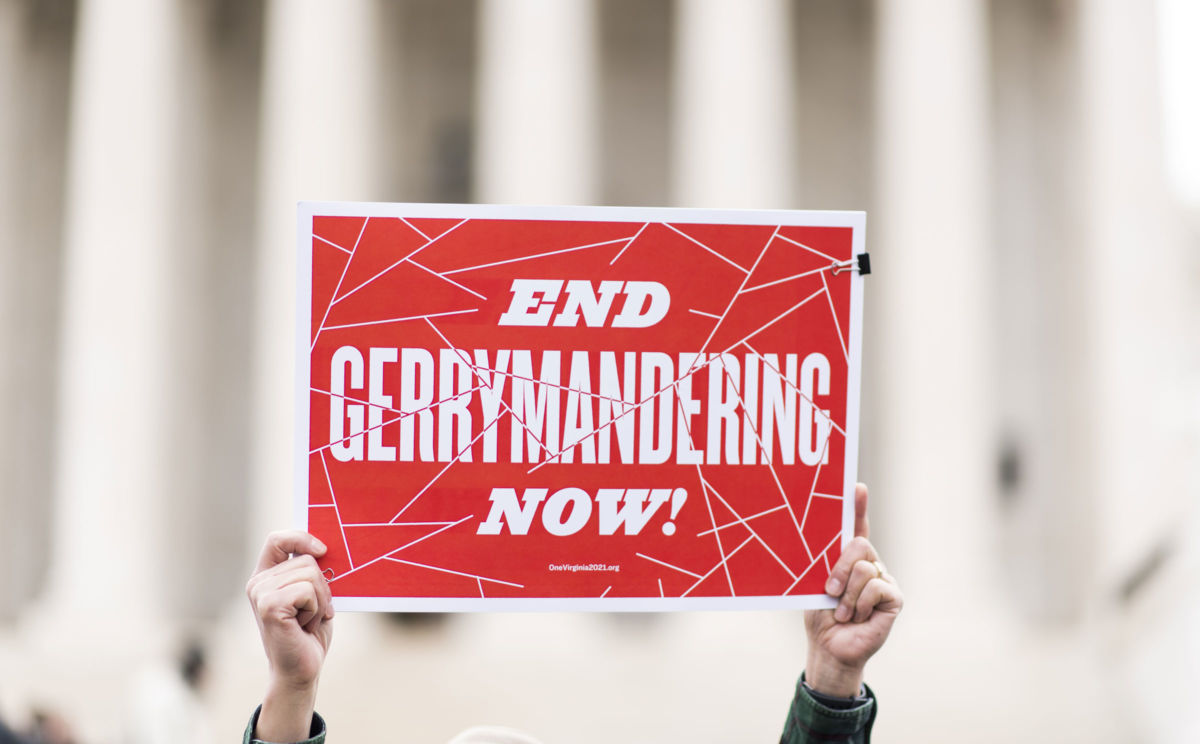This year was a banner year for redistricting reform, with voters in five states — Colorado, Michigan, Missouri, Ohio, and Utah — putting limits on extreme partisan gerrymandering.
Not surprisingly, the reforms were especially popular among Democrats, who have been on the receiving end of gerrymandering this decade. But the measures also earned wide backing from Republicans, winning with more than 60 percent support in four of the five states.
To understand how the measures did among voters, we analyzed the approval rate in each county and compared support for reform with votes cast in a statewide partisan election. Our preliminary analysis makes it clear that these proposals did strikingly well among Republicans, far outperforming candidates of either party in nearly every instance.
In other words, while the political class may still be divided along partisan lines about fixing gerrymandering, voters aren’t. The American people are strongly in favor of efforts to reform how redistricting is conducted in the states so that partisan lawmakers don’t have unfettered control of the process.
Ohio
The strongest support this cycle for redistricting reform came in Ohio, where in May voters approved a constitutional amendment banning partisan gerrymandering with a whopping 75 percent of the vote. To be sure, the amendment, known as Issue 1, did better in districts held by Democrats. But as shown in the first chart below, it received majority support in all 88 of Ohio’s counties, and it won supermajorities in every one of Ohio’s 16 congressional districts.
Indeed, the measure performed substantially better than Democrat Rob Cordray did running for governor this fall. Cordray won 46 percent of the statewide vote compared to Issue 1’s 75 percent. And Cordray’s average level of support by county was 35 percent, compared to 69 percent for Issue 1.
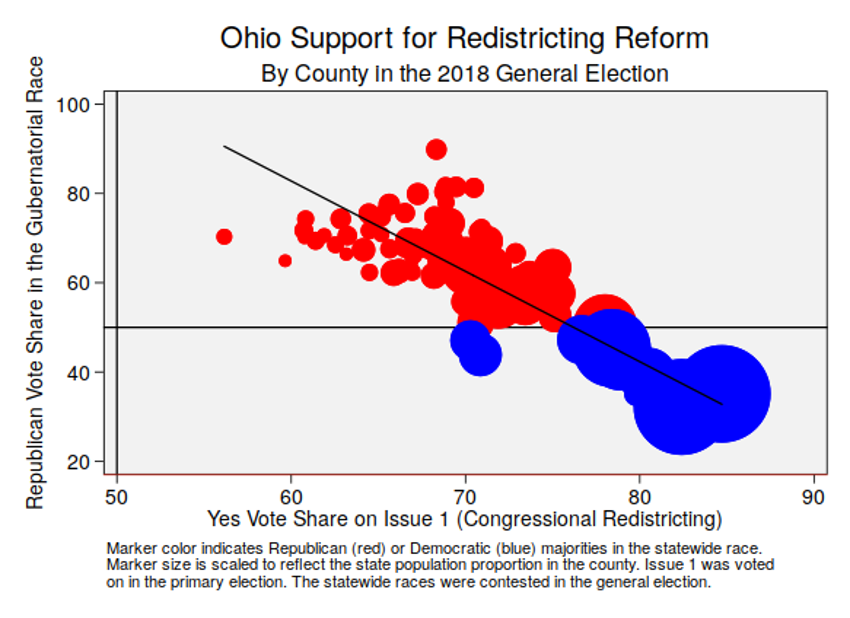
Colorado
Colorado voters also enthusiastically supported two proposals, Amendment Y and Amendment Z, that will create independent commissions to draw legislative and congressional lines starting in 2021. Statewide, the amendments won more than 70 percent of the vote, far surpassing the 55 percent of the votes necessary for approval — and also significantly outperforming Democratic gubernatorial candidate Jared Polis.
Indeed, the measures failed to carry only two of 64 counties, both by the narrowest of margins. On average, the amendments won 65 percent of the county-level vote — 72 percent in counties that supported the Democratic candidate for governor and 60 percent in counties carried by the Republican candidate for governor. (See the chart below.)

Michigan
Redistricting reform was almost as popular in Michigan. There, a citizen-led effort known as Proposal 18-2 to create an independent redistricting to draw both legislative and congressional districts faced claims from Republican officials that it was a Democratic power grab. Despite that, the measure won more than 61 percent of the statewide vote and a majority of the vote in 66 of the state’s 84 counties.
Again, the proposal was more popular in areas of the state that supported Democratic statewide candidates than in ones that were won by Republicans. But, as shown in the chart below, the measure won in a majority of Republican counties, including large ones like Ottawa County in the Grand Rapids metropolitan area and St. Clair County in the Detroit metropolitan area.
And again, the measure easily outperformed the Democratic candidate for governor, Gretchen Whitmer, who was elected with 53 percent of the vote.
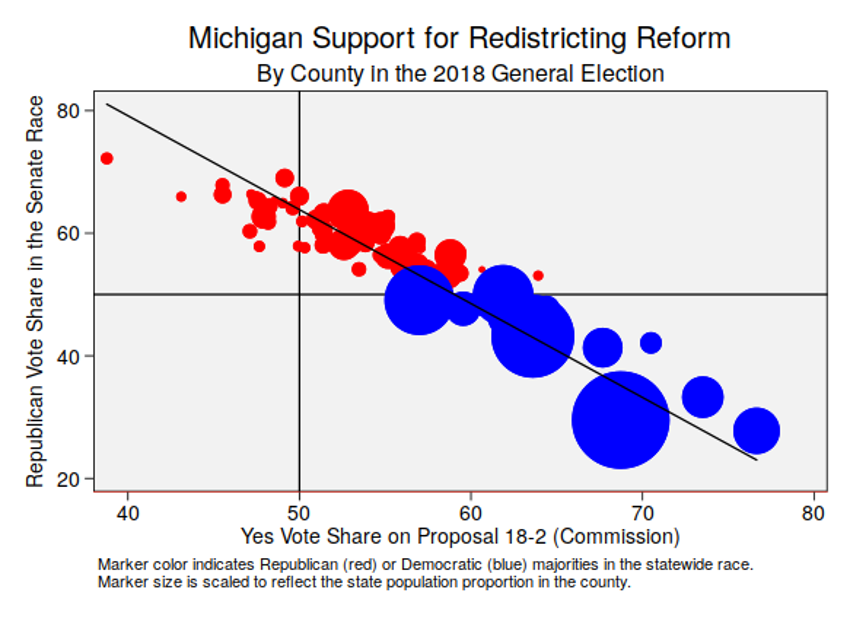
Missouri
In Missouri, a constitutional amendment to strengthen redistricting rules and create a state demographer to draw maps, passed with 62 percent of the vote. It won 82 of the 116 counties in the state, including a majority of heavily Republican counties.
Notably, while Democrat Claire McCaskill won only about 31 percent of the vote on average at the county level, the redistricting amendment won on average 54 percent support. (See chart below.)
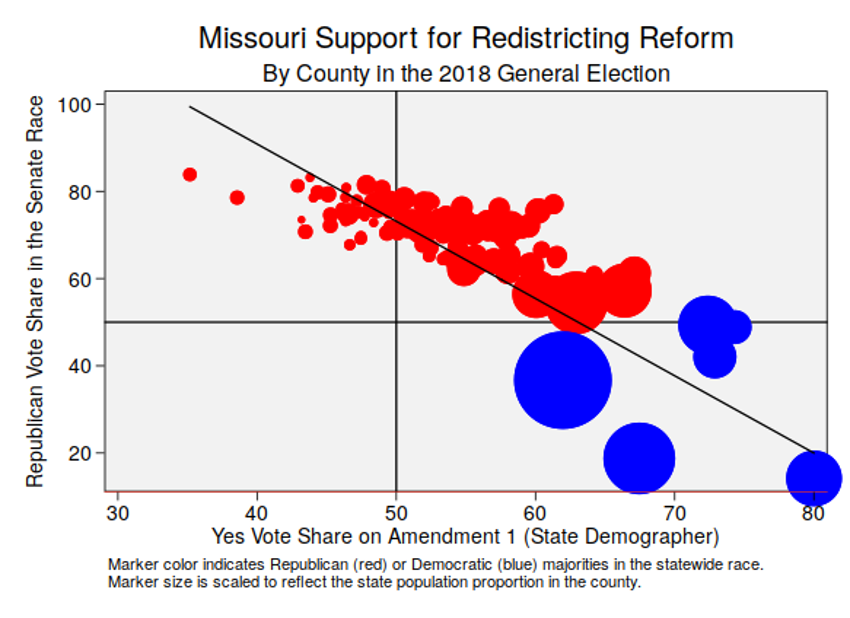
Utah
Only in Utah did a ballot measure to create an advisory commission win by a less than overwhelming margin in 2018. With some votes left to count, it appears the measure, known as Proposition 4, will be passed with 50.3 percent of the vote; a margin of about 7,000 votes.
But that narrow win is a bit deceptive. Given how red Utah is, a win on any measure is only possible with substantial support from Republicans. Indeed, the measure performed much better than Democratic Senate candidate Jenny Wilson, who won only 30 percent of the statewide vote in losing to Mitt Romney. On average at the county level, Wilson won 23 percent, while Proposition 4 won 42 percent — indicative of a sizable number of Romney/Proposition 4 voters. (See chart below.)
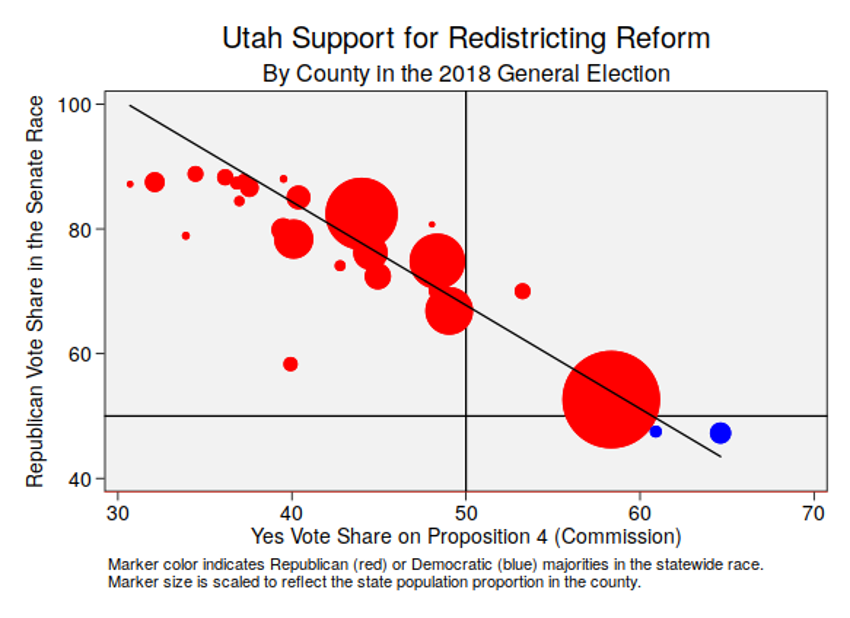
Angry, shocked, overwhelmed? Take action: Support independent media.
We’ve borne witness to a chaotic first few months in Trump’s presidency.
Over the last months, each executive order has delivered shock and bewilderment — a core part of a strategy to make the right-wing turn feel inevitable and overwhelming. But, as organizer Sandra Avalos implored us to remember in Truthout last November, “Together, we are more powerful than Trump.”
Indeed, the Trump administration is pushing through executive orders, but — as we’ve reported at Truthout — many are in legal limbo and face court challenges from unions and civil rights groups. Efforts to quash anti-racist teaching and DEI programs are stalled by education faculty, staff, and students refusing to comply. And communities across the country are coming together to raise the alarm on ICE raids, inform neighbors of their civil rights, and protect each other in moving shows of solidarity.
It will be a long fight ahead. And as nonprofit movement media, Truthout plans to be there documenting and uplifting resistance.
As we undertake this life-sustaining work, we appeal for your support. We have 5 days left in our fundraiser: Please, if you find value in what we do, join our community of sustainers by making a monthly or one-time gift.
